25 Orange Foods And All About Their Benefits




Most of us associate orange foods with the fall, the beginning of the holiday season, fall foliage, ripe pumpkins, and harvest. Orange is an exciting active color that stimulates appetite, increases energy levels, and even boosts metabolism.
It might be a love-it-or-hate-it color, but it is undeniably powerful. Orange is a very common color in fruits, vegetables, spices, and other foods worldwide.
Orange foods don’t only add some exciting, positive burst of color to a dish but are also full of nutritional benefits. Orange fruits and vegetables contain great amounts of Carotenoids that give them their naturally rich bright color. The most common carotenoids include Alpha and Beta-Carotene, Lutein, Lycopene, and Zeaxanthin. There are over 600 carotenoids found in foods, all of them being powerful antioxidants.
Our bodies convert many carotenoids into Vitamin A. We need Vitamin A for good vision, healthy skin, and a robust immune system.
Many orange foods are rich in Potassium. Getting enough potassium is essential for nerve and muscle health, keeping blood pressure in check, and avoiding hypertension.
Another vitamin many orange foods have in common is Vitamin C. Many citruses are especially rich in Vitamin C and are known to strengthen our immune system, improve cardiovascular health, and even slow down skin wrinkling.
We have listed the 25 most common and delicious orange foods, their nutritional benefits, and even some recipes for you to try. So let’s look at the magnificent orange foods one by one and see what each of them offers.
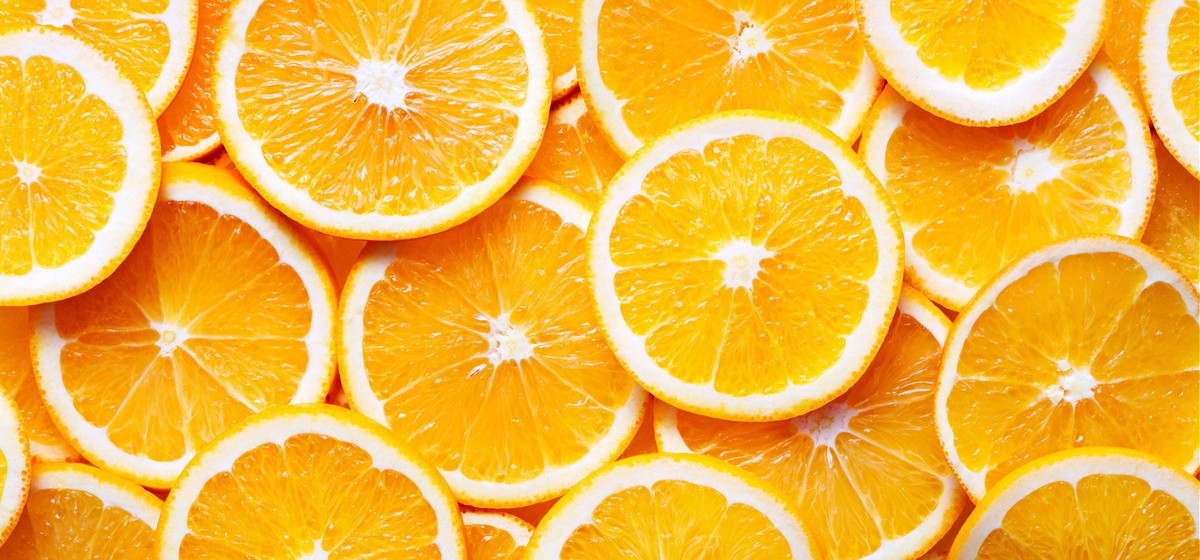
Orange must be the first fruit that comes to mind when you think of this color. This fruit is full of sweet citrusy flavor and is loaded with vitamins and nutrients.
One medium-sized orange contains 70 milligrams of Vitamin C and 237 milligrams of potassium, not to mention other decent amounts of Vitamin A, calcium, and 3 grams of fiber.
Oranges are a great fresh snack for any time of the day, but they are also a fantastic ingredient in many sweet and savory dishes.
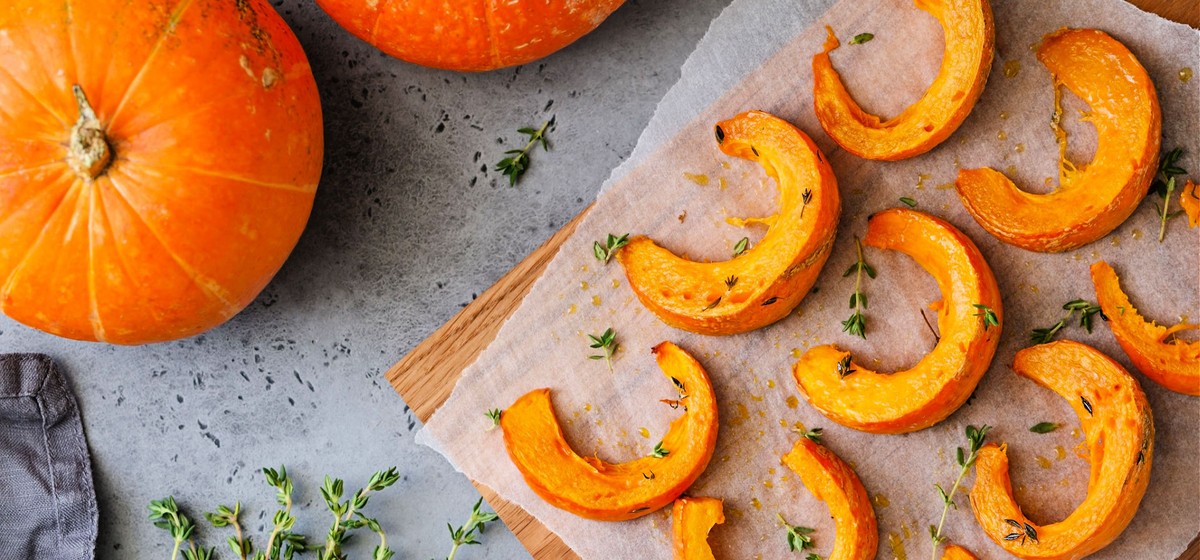
Even though we can enjoy pumpkins any season, they are traditionally associated with fall and the seasonal holidays - Halloween and Thanksgiving.
Pumpkin is full of beta-carotene, and just one cup of cooked pumpkin provides 200% of recommended Vitamin A. Even though it is a powerhouse of nutrients and flavor, it is still low in calories and is considered a diet-friendly food.
The number of sweet and savory dishes one can make with pumpkin is endless - it tastes amazing in classic desserts like pumpkin pie but can be just as delightful in savory dishes like a pumpkin risotto.
And if that wasn't enough to consider pumpkin one of the best orange foods on this list, you can also eat its delicious seeds! Don't throw away the insides of a pumpkin; learn how to roast pumpkin seeds instead, and have a healthy delicious snack ready in no time.

If you are naming orange vegetables, carrots are probably one of the first to come to mind. It’s an incredibly versatile vegetable most of us use in many different dishes we make every day. Carrots are often an important ingredient in soups and stews, stir-fries and salads; and how can we forget the magnificent carrot cake!
The name beta-carotene itself comes from the Latin word for carrot. This fact alone should give you an idea of how rich in these antioxidants carrots actually are. On top of that, they provide us with Vitamin K, calcium, and good fibers that help regulate blood sugar levels.

This stone fruit is good for us in its fresh and dry form, as it is delicious. Apricots can be a delightful low-calorie snack and a great ingredient to use in desserts, but they are also great for making a sweet and sour glaze for meat and poultry.
Like many other fruits on this list, apricots are full of nature’s goodness. They are rich in Vitamins A, E, and C, potassium, manganese, and a group of polyphenol antioxidants called flavonoids, which are known to protect against illnesses like diabetes and heart disease.
Glazed Apricots with Ricotta and Pistachios
Apricot Chicken Curry

Mangoes originated in India over 4000 years ago and were considered a sacred fruit. Because of their large pit, they relied on humans to spread them worldwide and let everyone enjoy the sweet and juicy fruit. They are also known as the “king of fruit” because their flavor mixes oranges, peaches, and pineapples.
Today, most mangoes in grocery stores are grown in Florida, Mexico, Haiti, and South America. However, Asia still grows 75 percent of all mangoes in the world.
If all this was not enough to convince you to add more mangoes to your diet, you should know that they are also incredibly good for your health. They are rich in Vitamins A and C, iron, lutein, and zeaxanthin, taking care of our skin, eyesight, and digestive system.
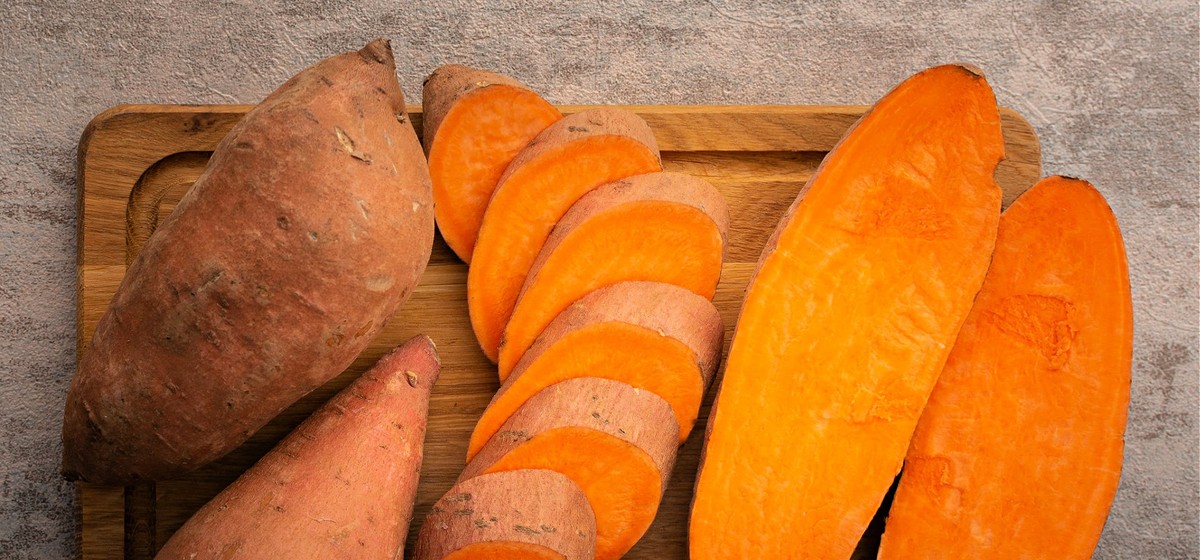
Sweet potatoes are one of our favorite ingredients during fall and winter. They are a must on a holiday dinner table, whether a classic side dish form or an exquisite pie. We like them mashed, fried, roasted, pureed, and everything in between.
Just one average-sized sweet potato contains 400% of the recommended daily Vitamin A intake! In addition to all the common health benefits orange foods provide, sweet potatoes benefit our brain function, promote gut health, and regulate blood sugar. They are also perfect for women’s reproductive system, boosting progesterone production.

As with most winter squashes, butternut squash is both delicious and nutritious. It is slightly meatier compared to pumpkin and provides similar health benefits. It wins a few more points when it comes to iron and potassium content and helps keep our blood pressure in check.

Kabocha squash is slightly more nutrient dense than pumpkin. It is packed with nutrients that prevent diabetes and cancer, boost the immune system, treat inflammation, and promote heart health. Kabocha contains vitamins A and C, some B vitamins, fiber, magnesium, potassium, and antioxidants.
Kabocha is known for its rich sweet taste. It is sweeter than butternut squash and tastes like a combination of sweet potato and pumpkin. Cooked kabocha squash is light, fluffy, velvety, and absolutely delightful.
Tortellini with Brown Butter and Kabocha Squash
Kabocha Squash Salad
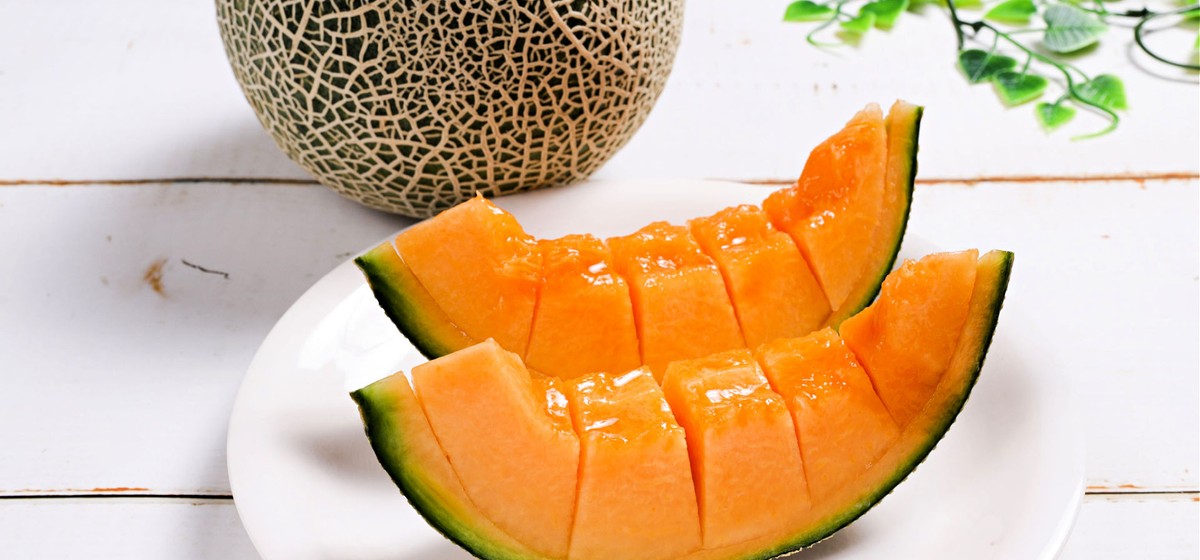
This sweet and juicy orange summer fruit is incredibly versatile. Cantaloupe tastes amazing in simple juices and smoothies, works well in desserts, and intensifies the flavor of such savory delicacies as prosciutto and fresh mozzarella. It’s an ingredient that you often see in Italian cuisine.
In addition to being full of Vitamin A, cantaloupe also packs decent amounts of zinc, folic acid, calcium, iron, magnesium, and copper. It is also 90% water and is almost as juicy as a watermelon, making it a great low-calorie source of fiber and electrolytes.
Fresh Prosciutto Salad with Mint Basil Vinaigrette
Stacked Granola and Melon

Kumquat is a small sweet, citrusy fruit that originated in China. Its name comes from the Cantonese kamkwat, where “kam” means "golden," and “kwat” means "orange."
This fruit is a true superfood, and many of its benefits come from its peel. You don’t have to peel kumquats but can eat them with the skin. In fact, their sweet flavor actually comes from the peel, while their juice is sour. Kumquat skin is also full of fiber and antioxidants.

Bell pepper is a beautiful and delicious vegetable that comes in many colors. The color of the bell pepper represents its maturity - green peppers get picked first, yellow goes off the vine second, orange bell peppers go third, and the fully ripened red last.
As bell pepper matures, it gains more sweetness and fruitiness. And at the same time, start packing more and more nutritional value. When a green bell pepper turns red, it picks up almost 11 times more beta-carotene and almost doubles its Vitamin C content.
Orange bell peppers are just one step away from fully ripened red ones in their nutritional value. They are slightly less sweet and a bit tangier, making them perfect for various dishes.

Persimmons are originally from China. This delicately sweet fruit slowly spread across Asia and the rest of the world due to its unique flavor, texture, and proven health benefits.
Like most orange foods, persimmons are a great source of Vitamins A and C and manganese. They are delicious on their own and are often used in both sweet and savory dishes.
Unripe persimmons can numb your mouth due to the proanthocyanidins, commonly known as tannins, common in unripe fruit. You should not fear this if you cook persimmons, though.
Persimmon Cookies
Brown Butter Persimmon and Ricotta Crostini

Papaya is an incredibly rich and flavorful fruit that tastes like a combination of cantaloupe and sweet mango. It is not overwhelmingly sweet, but its texture is so buttery and creamy that it almost melts in your mouth.
Like many orange fruits on this list, papaya is full of vitamins and antioxidants, and you should absolutely include this superb food in your diet if you haven’t yet.

Tangerines are sweeter and more potent than any other orange family fruits. They have thin skin and are incredibly juicy and flavorful. They are not only commonly used for marmalades and desserts but, similar to other citrus fruits on this list, make a great component in glazes and sweet and sour sauces.
They are also packed with vitamins and antioxidants that support immunity, provide cancer-fighting properties, and improve brain, skin, and heart health.
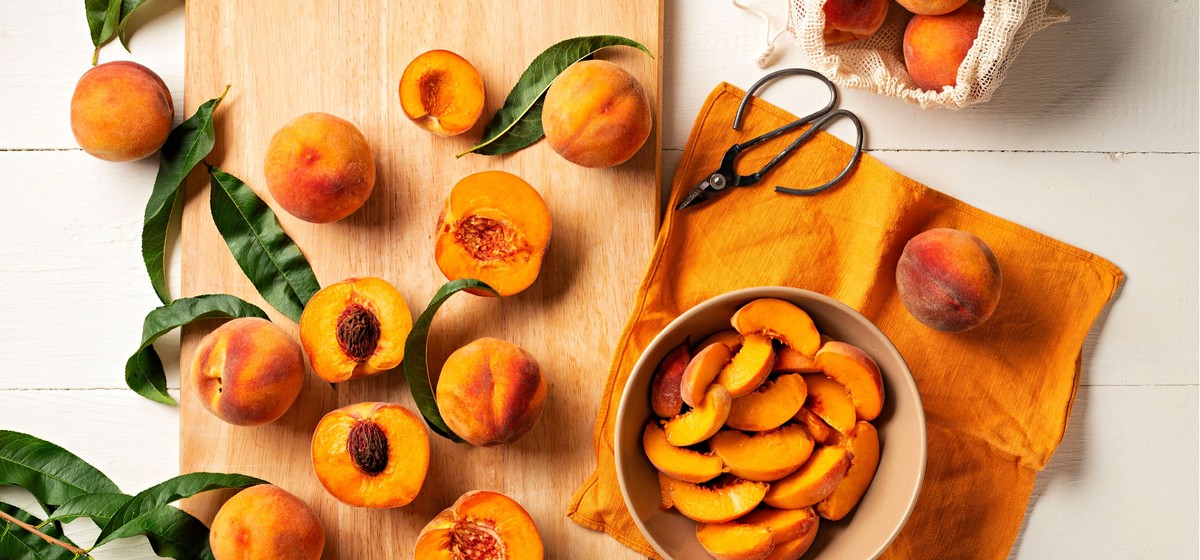
The sweet and juicy peach is the official fruit of Georgia State as of April 7, 1995. Peaches are soft, sweet, juicy, and absolutely divine - one of nature’s best gifts indeed. They are an essential part of many sweet and savory summer recipes. Who doesn’t love a Peach Cobbler!
Peaches are also a great source of dietary fiber, potassium, and Vitamins A and C.

Tomatoes come in a rainbow of colors! Orange cherry tomato variety tends to be mild, slightly sweet, and low-acid.
For a good boost of Vitamin A and lycopene, orange cherry tomatoes are your best bet.

Habanero peppers, similar to bell peppers, come in several different colors. But the bright orange kind of this fruity and mildly spicy pepper variety is often called the “true habanero.”
Habanero peppers are not only packed with carotenoids but also capsaicin and capsaicinoid antioxidants. All these elements work together to decrease insulin resistance, improve pancreatic activity, and regulate blood sugar levels.
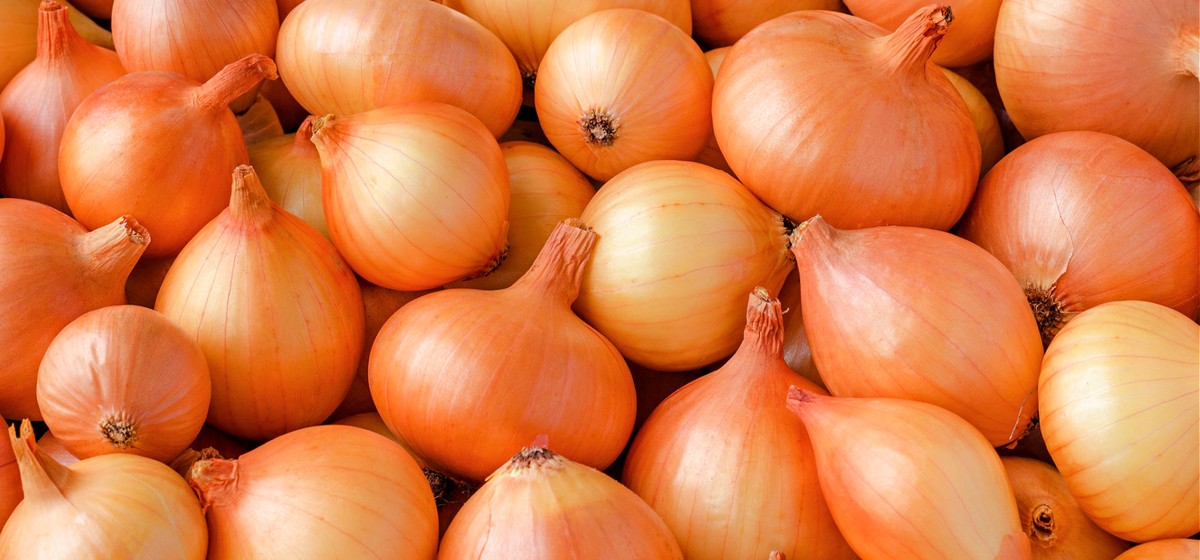
Onions are a staple in every kitchen. They are one of the base ingredients you can’t imagine a soup, a stew, a stir-fry, a roast, or many other dishes without. Sauteed and caramelized onions taste so good we can have them as a side or a part of a proper sandwich or burger.
In addition to the endless ways we apply onions in our everyday cooking, they are also incredibly rich in vitamins and antioxidants. Onions contain quercetin, known for its anti-inflammatory properties, lowering swelling, helping with arthritis, and treating bladder infections.
Together with garlic, onions are famous for allicin, which is responsible for their strong aroma. Allicin in onion helps our colon to fight bacteria and toxins. So one might consider all these tears caused by cutting onions to be happy after all!

Chanterelles are one of the most popular types of mushrooms. If you only go for the "safe" creminis and portobellos, it's time you gave chanterelle mushrooms a chance they deserve!
These delicate wild mushrooms are fruity, peppery, and absolutely delicious. They are known to leave a fantastic ephemeral aftertaste of fruits like apricots or peaches without overwhelming sweetness.
Suppose you need more reasons to get this mushroom variety a chance. In that case, chanterelles are also rich in Vitamin D, polysaccharides like chitin and chitosan known to boost the immune system and stimulate cell reproduction, and the classic orange food beneficial components like carotenes, potassium, and manganese.
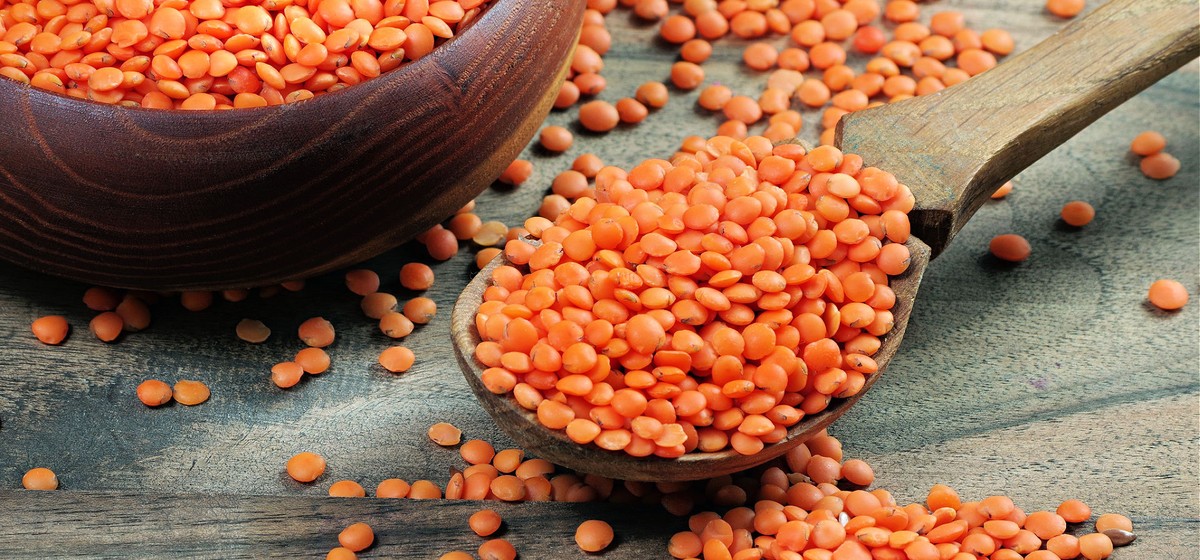
Red Lentils are small orange legumes that cook rather quickly and taste mildly sweet and nutty with some earthiness to them. They are much more delicate in texture than brown or black lentils and are a perfect ingredient for a quick, nutritious, and inexpensive midweek dinner.
All lentils are rich in fiber, protein, folate, and potassium; red lentils are superior in providing B vitamins. They are high in Vitamins B6, B9, pantothenic acid, and thiamine.
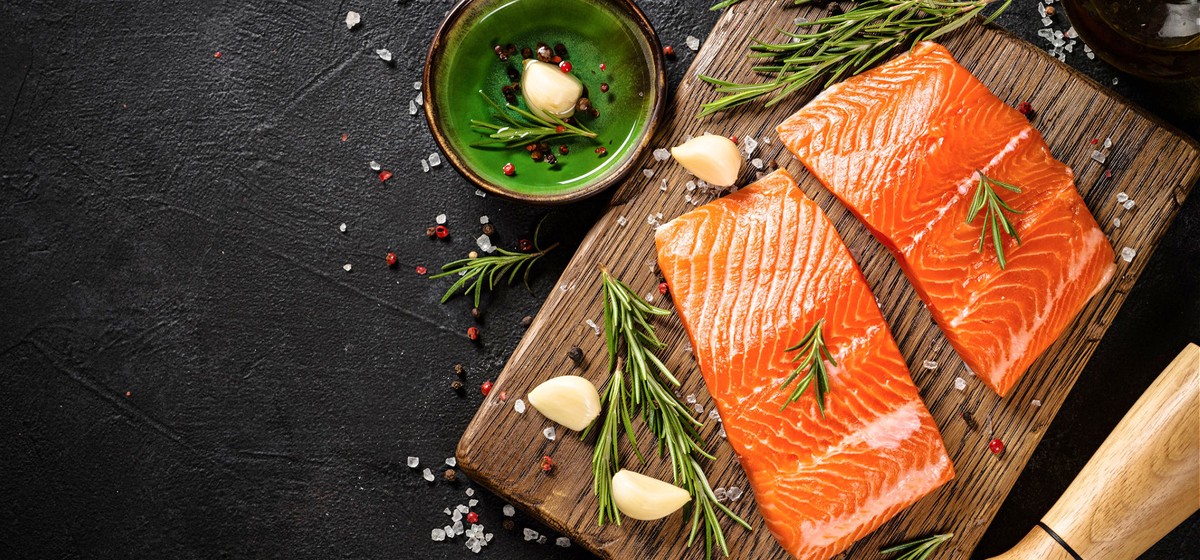
Salmon is one of our planet's most delicious and nutritious foods, disregarding its color! It’s yummy, versatile, and available almost everywhere.
There are many salmon varieties and farmed salmon surely proved to be richer in omega-3 fatty acids and protein. But any salmon you consume is guaranteed to add good vitamins and nutrients to your diet.

In general, any fish roe is a great source of nutrients like phosphorus, selenium, folate, and vitamins A, B12, and D. It is rich in choline, lutein, and zeaxanthin, supporting our liver health and eyesight.
If you’re looking to add more vitamin E to your diet, there’s no better source than salmon roe - just 100 grams of salmon roe has 10mg of vitamin E. It is an incredibly nutrient-dense keto-friendly food you can add to many of your staple dishes!

It’s hard to find anyone who hasn’t heard of cheddar cheese. Cheddar is a universal crowd-pleaser cheese - it’s buttery, not too sharp, creamy, and pleasantly flavorful without being too overpowerful or sharp.
Just one slice of cheddar contains 7 grams of protein, a healthy amount of calcium, and Vitamin K, promoting bone health. In addition to that, cheddar contains magnesium, phosphorus, and zinc.
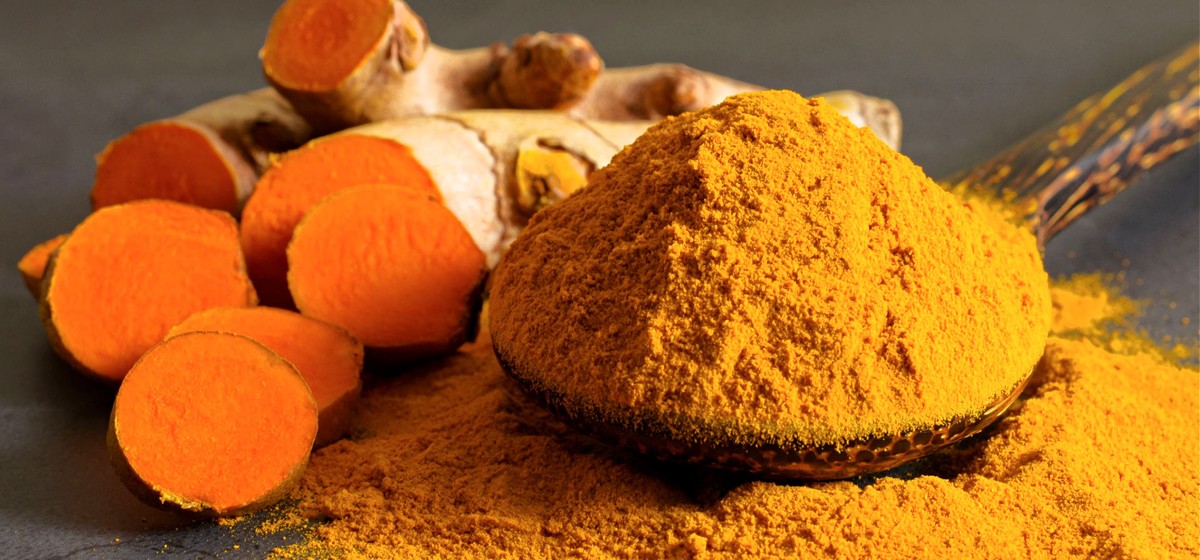
Turmeric is a fantastic superfood used for centuries in Indian and Middle Eastern cuisine; it is one of the key ingredients in curry powder. It is a ginger family flowering plant and comes from Curcuma's root.
Only one tablespoon of ground turmeric contains almost 1 gram of protein and two grams of dietary fiber. It is also a great source of potassium, Vitamin C, and iron.
Turmeric’s earthy, peppery flavor makes it the perfect addition to all sorts of recipes. In savory dishes, turmeric spice works especially well with root vegetables, winter squash, poultry, beef, or lamb. Its earthy, peppery flavor is perfect for white rice and cauliflower rice. Turmeric is just as good in desserts combined with citrusy or tropical flavors like banana and mango.
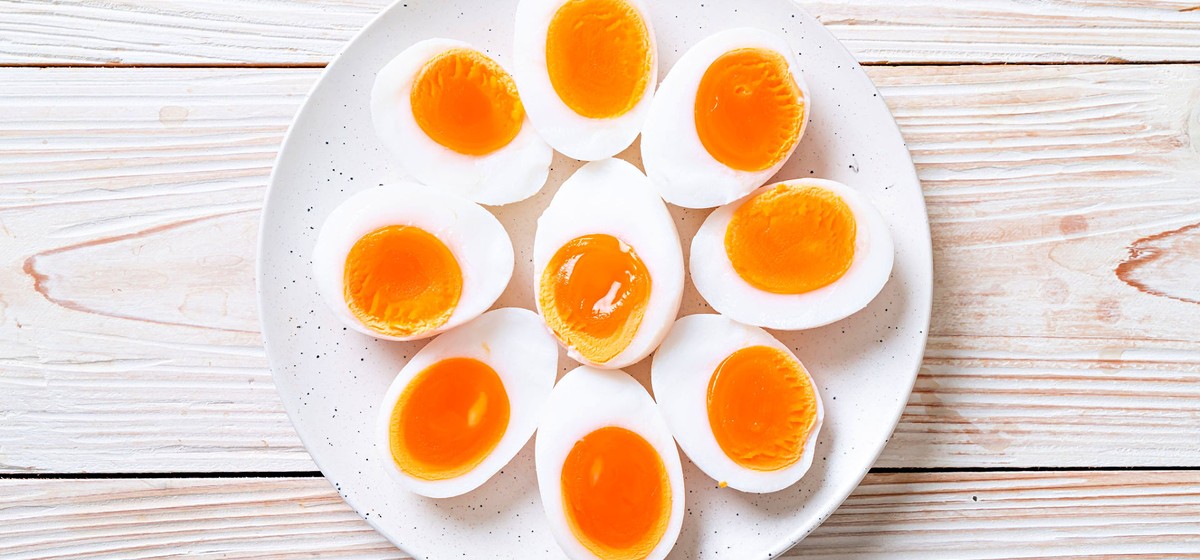
Egg yolks are a nutritional powerhouse - they are rich in iron, Vitamins A, D, E, and K, omega-3 fats, and B-12.
According to a study by the Journal of Food Science, egg yolks that look more orange contain even more omega-3s and vitamins compared to an average lighter yolk egg.